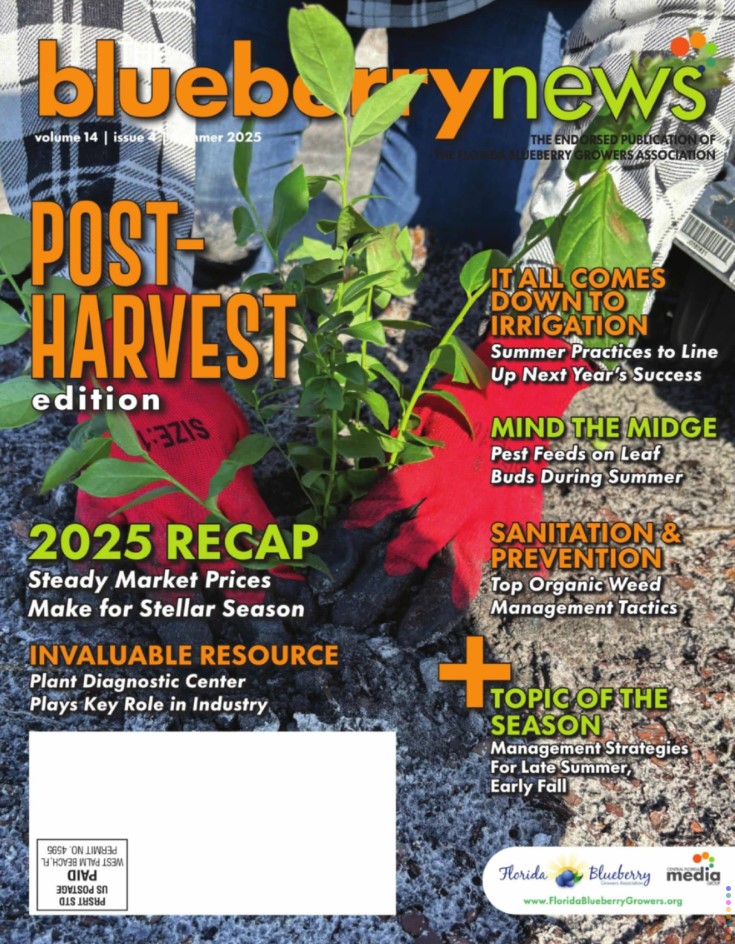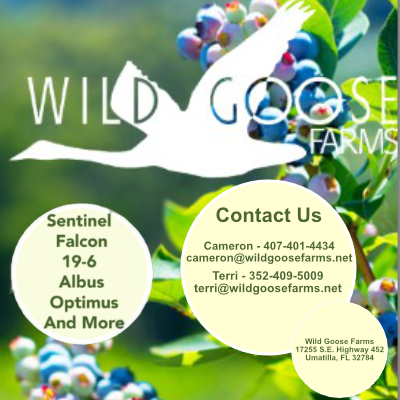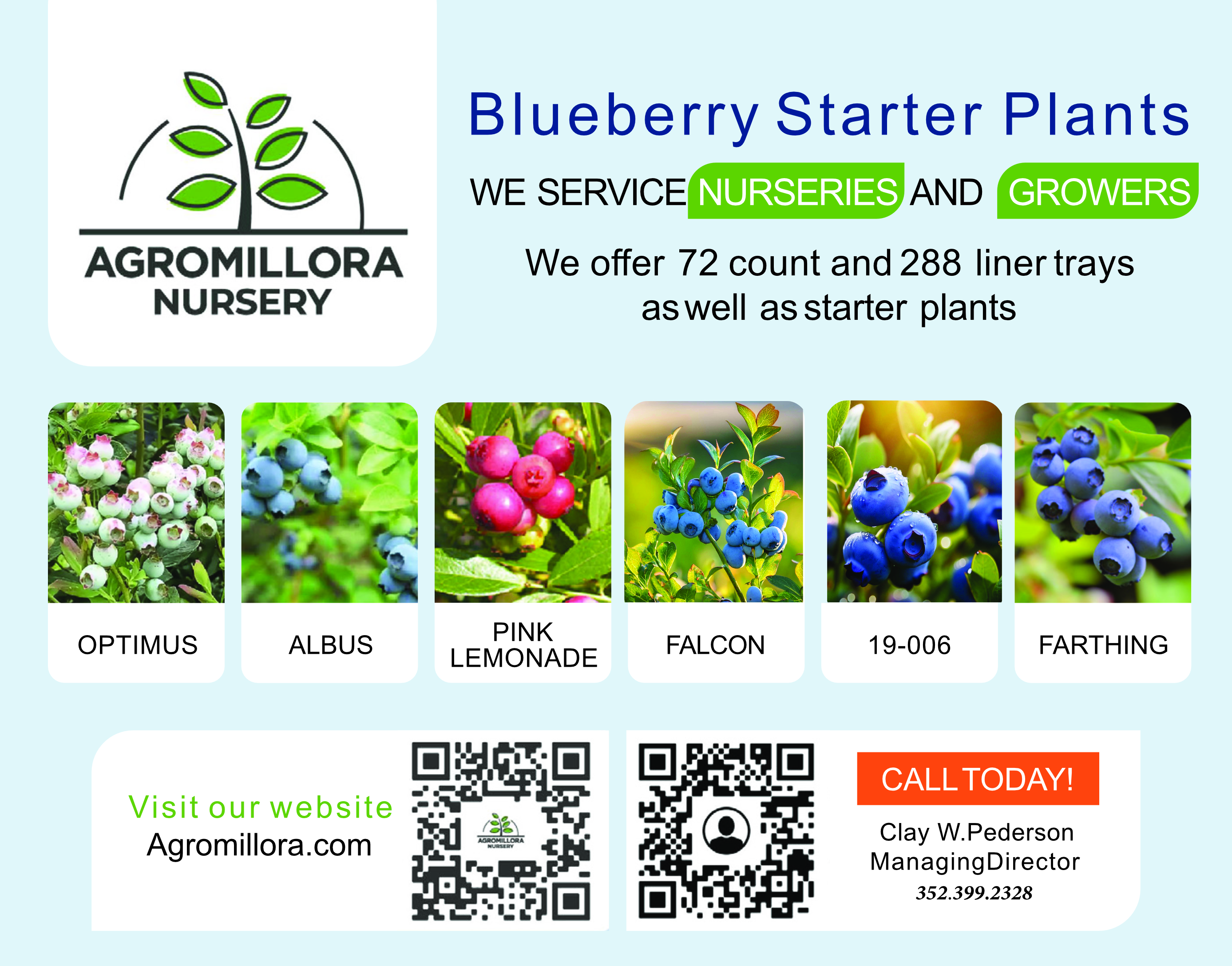The Blueberry Advisory System, a Grower Tool for Timing Anthracnose Fruit Rot Controls
Anthracnose fruit rot (AFR), also called ripe rot, is a fungal disease that can damage blueberry fruit, resulting in sunken lesions, softening, shriveling, and rotting of berries, along with eruptions of salmon-orange masses of spores. Symptoms typically start at the blossom end of the berry and cause the fruit to be unmarketable, affecting pack-out percentages and grower revenues. AFR infections can occur as early as bloom, with symptoms often not appearing until the fruit ripens or after it has been harvested and stored. Warm, wet weather is conducive to the development of AFR, with temperatures between 59-81°F (15-27°C) and leaf wetness duration of more than 12 hours the most favorable for infection. Rainfall or overhead irrigation disperses the pathogen to uninfected fruit and plants, creating additional opportunities for infection. The pathogen can also be spread by fruit-to-fruit contact, harvesting machinery, and sorting equipment.
Control of this disease depends primarily on protective fungicide applications, which many blueberry growers apply using a calendar-based method. Under this method, fungicide applications are made at regular intervals during fruit development, often every 14-21 days, which over the course of a season can be a significant cost. Fungicides suggested for use in a rotation to control AFR include Switch® (cyprodinil + fludioxonil), Captan, and Omega® (fluazinam). AFR in Florida has shown resistance to Abound® (azoxystrobin) and Pristine® (pyraclostrobin + boscalid).
The Blueberry Advisory System (BAS) is an alert system that signals Florida blueberry growers when environmental conditions are favorable for the development of AFR. The system is active from December through May. Data for AFR risk models is collected from the Florida Automated Weather Network (FAWN), which has weather stations throughout the state. Users select the FAWN site that is closest to their farm for alerts. The risk for AFR development is rated as low, moderate, or high (Figure 1), and growers who sign up for notifications will receive a text and/or email message when the risk is moderate or high. This allows growers to target their fungicide sprays to those periods when the development of infection is more likely, which may decrease overall applications for the season while achieving a comparable level of disease control.
In field trials on nine Florida blueberry farms over the 2018-2019 seasons, the BAS was shown to provide comparable levels of AFR control in most cases (when conditions were favorable for AFR development) with fewer fungicide applications compared to existing grower practices. Growers can also use the BAS risk assessments to choose whether to use a less expensive fungicide (such as Captan) when disease risk is moderate, or a more expensive product that may have greater efficacy during periods of high risk. In addition to risk alerts, the BAS website has charts and tables that track AFR risk over a user-defined time period (Figures 2 and 3).
Figure 1. Blueberry Advisory System disease risk rating.
Credits: AgroClimate
Figure 2. Chart of AFR disease risk
Credits: AgroClimate
Figure 3. Table of AFR disease risk and conditions
Credits: Agroclimate
Please try this system out over the coming season, and let me know any thoughts you may have, including ideas for improvements.
CREDIT:
Doug Phillips
UF/IFAS Blueberry Extension Coordinator





